Diabetic and Kidney Friendly Salad Dressings
Salads can be a great way to get your daily intake of vitamins and minerals, but what if you could make them even healthier?
With kidney friendly salad dressings, you can! These recipes are specifically designed with renal patients in mind, making it easy to enjoy salads without worrying about over-taxing our kidneys.
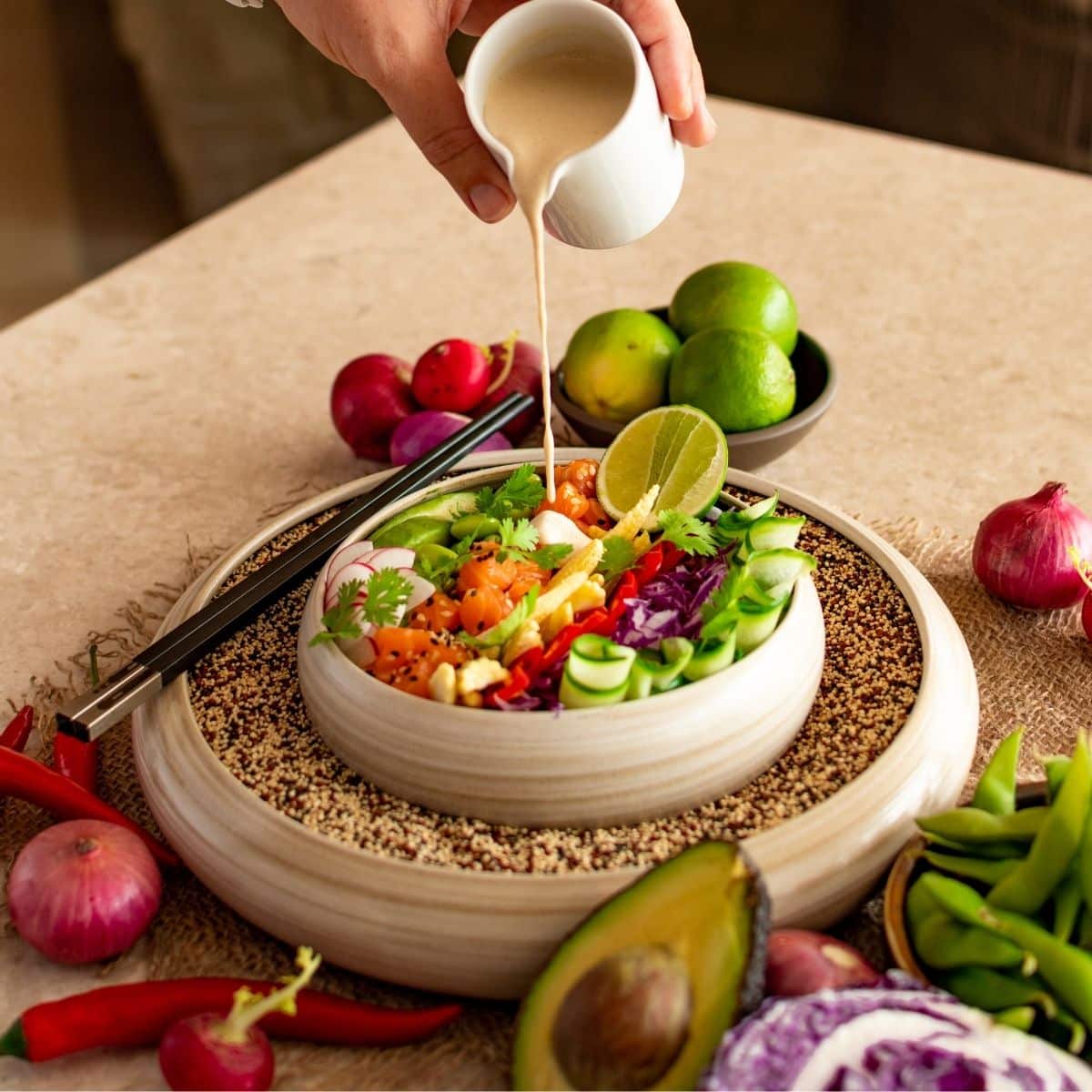
Having kidney friendly dressing options at home is essential for anyone looking to lead a healthier lifestyle, even on a kidney friendly pasta salad.
The good news is there are plenty of delicious and nutritious recipes available online that have been created with the kidney patient in mind.
From vegan varieties using avocado oil, to simple homemade concoctions made with olive oil and herbs - these tasty creations will give any salad an extra boost of flavor while keeping your health in check!
Jump to:
- Types Of Salad Dressings Suitable For Diabetics
- Best Homemade Salad Dressing Recipes For Diabetics
- Best Store-Bought Salad Dressings For Kidney Disease
- Kidney-Friendly Mayonnaise Alternatives
- Creamy, Kidney-Friendly Dressings
- Salads Recommended For Renal Dieters
- Balsamic Vinegar And Kidney Disease
- Simple And Quick Homemade Low Sodium Salad Dressing Recipes
- Frequently Asked Questions
- Use Healthy Salad Dressings Made From Scratch
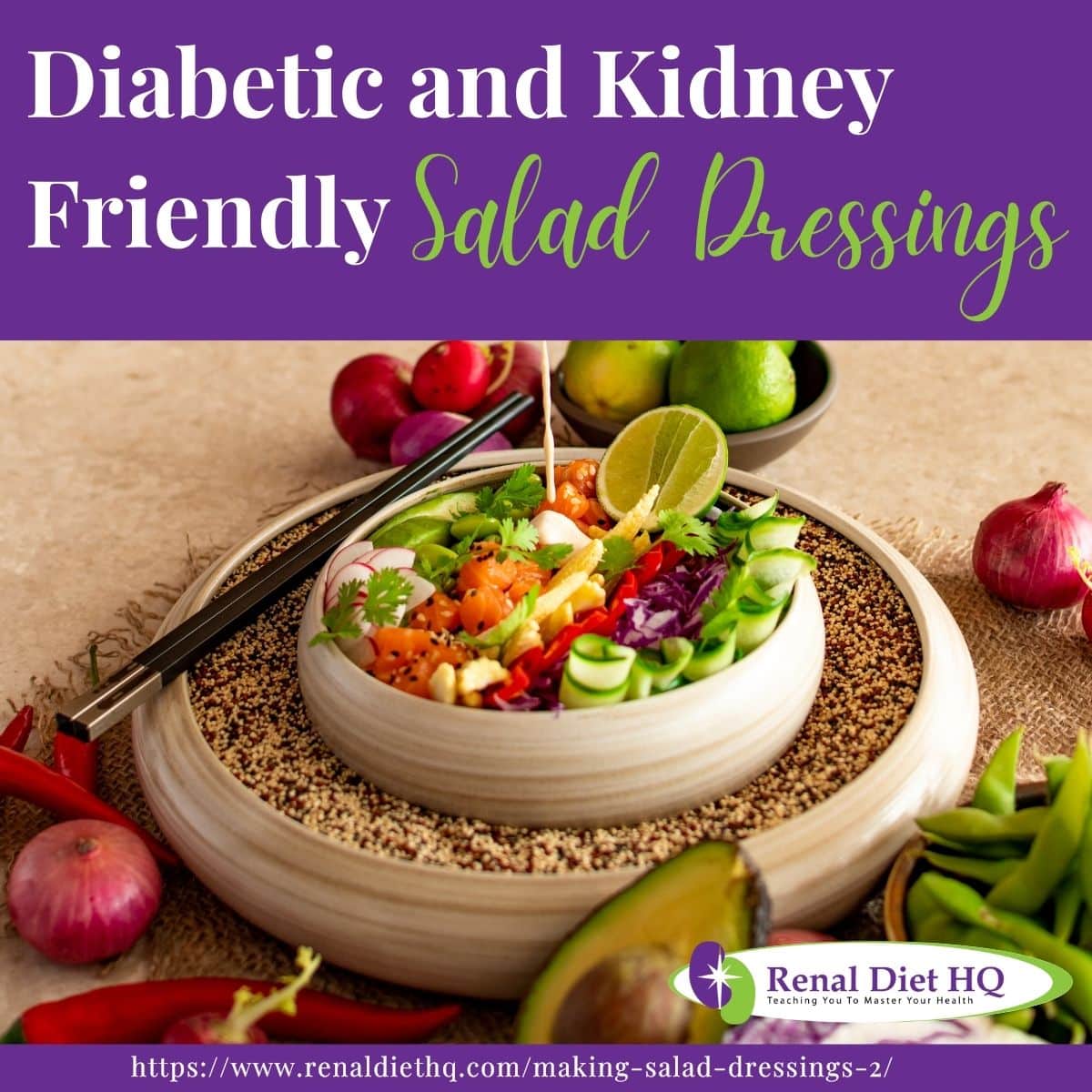
Types Of Salad Dressings Suitable For Diabetics
Diabetics need to be mindful of their diets, and salad dressings are no exception. Thankfully there are a number of delicious diabetic-friendly options available for those in search of a healthier way to enjoy salads. There is a diabetic renal diet meal plan available for those who are interested!
Whether it's something store bought or homemade, here are some ideas for the perfect low potassium and diabetic friendly salad dressing.
For starters, many store bought dressings offer suitable alternatives that don't sacrifice on taste. For instance, olive oil based vinaigrettes tend to have lower levels of sodium than other dressings and may even contain healthy fats from monounsaturated sources like avocado or flaxseed oil.
Balsamic vinegar is another great choice as its tart flavor adds punch without too much sugar or salt. Homemade diabetic salad dressing recipes can also provide an easy alternative with plenty of flavorful ingredients, and can be a part of food for your stage of chronic kidney disease.
No matter what type you go for, finding the ideal balance between tastiness and nutrition doesn’t have to be difficult when making healthy choices for a renal diabetic diet at mealtime!
Best Homemade Salad Dressing Recipes For Diabetics
Making a diabetic-friendly salad dressing at home is easy and delicious. With just a few ingredients, you can whip up a nutritious dressing that fits into any diabetic diet.
Step One: To get started, choose an oil as the base for your dressing. Opt for healthy oils such as olive or avocado oil, both of which are great sources of monounsaturated fats that help regulate blood sugar levels.
Step Two: For added flavor and nutrients, try adding herbs like basil or oregano to your mix. If you’re looking for something sweeter, add in some honey or maple syrup. Be sure to taste test your mixture before using it on your salad so you know if it needs more seasoning or sweetness.
I love using this bottle to get the proportions right for making my own dressing.
When selecting other ingredients to include in your dressing, look for low calorie options with plenty of health benefits. You could also consider adding vinegar, lemon juice or yogurt to give it some tanginess and creaminess without too many extra calories. I love apple cider vinegar for this but I know some people wonder if apple cider vinegar is harmful for kidneys.
Don't forget about spices! Adding garlic powder or onion powder will boost the flavor while providing antioxidants and anti-inflammatory compounds that support overall wellness.
Finally, make sure all of your ingredient choices are kidney friendly since they're necessary to maintain good kidney function in those with diabetes.
By carefully choosing each component of your homemade diabetic-friendly dressing recipe, you'll be able create a tasty addition to anyone's meal plan!
Making a homemade salad dressing can be both economical and healthy. For those with diabetes, kidney issues or other health concerns, having the right ingredients on hand to make your own is essential. Make sure you're aware of food safety for people with kidney disease.
More On Making Your Own Salad Dressings
Creating your own dressings allows you to control what goes into them and avoid any artificial sweeteners or flavor enhancers that may not be suitable for diabetics or those with chronic kidney disease. Here are some of the best homemade salad dressings for diabetics:
- Olive oil-based vinaigrette - This simple dressing combines olive oil, vinegar, garlic, herbs and spices for a light yet flavorful option. It's low in carbohydrates and calories which makes it ideal for people managing their blood sugar levels. Be sure to use kidney friendly spices without salt.
- Avocado-lime dressing - Creamy avocado blended with lime juice, cilantro and seasonings creates an indulgent but still light dressing perfect for salads or dipping vegetables. The natural fats found in avocados help keep blood sugar levels stable while providing a nutrient boost of potassium and fiber. This one has a great creamy texture!
- Yogurt-herb dressing - Greek yogurt mixed with fresh herbs like parsley, basil and chives creates a tangy yet refreshing dressing great on just about anything! Its probiotic benefits also aid digestion which helps manage diabetic symptoms like gas or bloating.
- Mustard-Dijon vinaigrette – A combination of Dijon mustard, balsamic vinegar, honey (or agave nectar) plus onion powder packs a punch of flavor without adding excessive sodium or fat making it a great choice for those with kidney disease who need to limit their intake of these nutrients.
- Tahini-lemon sauce – Nutty tahini combined with lemon juice works well as either a marinade or topping on roasted veggies like cauliflower or eggplant. Rich in vitamins B6 and E as well as minerals like magnesium and iron this versatile sauce adds delicious complexity without sending blood glucose soaring sky high.
For More Recipes and Ideas --->> Get Your Free Meals and Recipes That Are Perfect for Pre-Dialysis Diets, Pre-Dialysis with Diabetes, or Dialysis Diets.
What is Tahini?
Tahini is a paste made from ground sesame seeds. It is a popular ingredient in Middle Eastern and North African cuisines, used in everything from hummus to halva. It has a nutty, buttery flavor and is a great source of plant-based protein.
| Nutrition per 1 tablespoon (15g): |
| Calories: 89 |
| Protein: 3g |
| Sodium: 3mg |
| Potassium: 51mg |
| Phosphorus: 112mg |
No matter what type of lifestyle you have, there are plenty of options when it comes to creating tasty yet healthy homemade salad dressings that won't raise your risk factors associated with diabetes or kidney disease. Learning how to manage chronic kidney disease is hard, but with the right tips, you can do it!
With a little creativity you'll find yourself whipping up all sorts of creations that will tantalize your taste buds while keeping your health goals firmly in check!
Best Store-Bought Salad Dressings For Kidney Disease
It's important to stay mindful of what we eat, especially when it comes to those with kidney disease. Salad dressings can be a great way to add flavor and texture to our salads without adding unnecessary sodium or sugar that could aggravate health concerns.
Fortunately, there are several store-bought salad dressings available for people who have kidney disease.
Is balsamic vinegar good for kidneys?
Yes! Balsamic vinaigrette is a wonderful option as it contains healthy fats from olive oil and antioxidants from the balsamic vinegar.
Plus, it has very low sodium content (listen to the podcast on low sodium renal diet) so you don't need to worry about exceeding daily recommended levels.
Another great choice is lemon juice with extra virgin olive oil—it’s light yet flavorful and also easy on your kidneys. I personally love Brianna’s French Vinaigrette dressing for all kinds of foods, including salads but also vegetables and marinades.
For those who prefer creamy dressings, there are some options too! Kidney friendly creamy salad dressing usually includes ingredients such as Greek yogurt, cottage cheese, avocado, tahini, and herbs like basil or oregano.
These ingredients provide added creaminess while still being gentle on the kidneys due to their low potassium content. There are tons of low carb low potassium foods out there to check out, by the way!
No matter which type of dressing you choose, make sure that it meets your dietary needs and preferences. After all, having food that tastes delicious but doesn't hurt your body should always come first!
Kidney-Friendly Mayonnaise Alternatives
For those with a kidney condition, the classic creamy mayonnaise is often off-limits. But that doesn't mean you can't enjoy flavorful salad dressings! There are plenty of delicious options available that are suitable for diabetics or those on a renal diet.
One great option is to use balsamic vinegar as your base. Balsamic vinegar has many health benefits and is generally considered safe for those with kidney disease. It also adds a lovely tartness and depth of flavor to any salad dressing.
You can pair it with olive oil, herbs, spices, garlic, mustard, or even citrus juices to create something truly special.
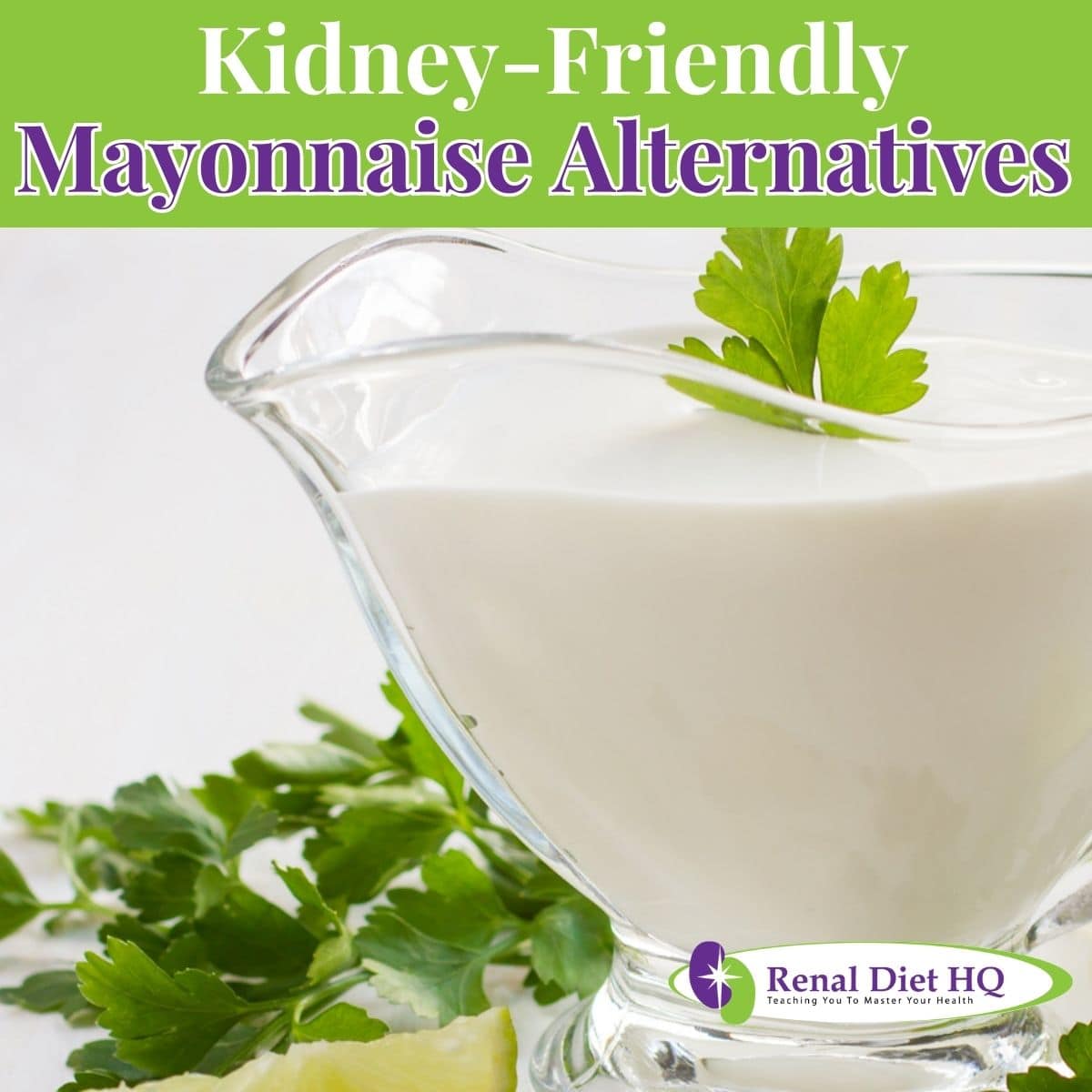
Another alternative is tahini-based dressings. Tahini paste is made from ground sesame seeds and provides an excellent source of healthy fats and minerals like calcium, magnesium and iron.
Blending tahini together with lemon juice and other seasonings makes for a rich yet light dressing that's perfect for topping off salads (or veggie bowls!).
Whatever route you take when creating your own unique salad dressing recipe - just make sure you keep it low in sodium! That way you can rest assured knowing that your dressing won't negatively affect your kidneys or overall health. Creating smart goals for kidney disease can help you move in the right direction with your kidney disease diet plan.
Creamy, Kidney-Friendly Dressings
Are you in search of a delicious and kidney-friendly dressing for your salads? Have no fear, because we’ve got plenty of ideas to choose from!
So without further ado, let's dive into some creamy, tasty dressings made just for salad lovers who care about their health.
Let's start off by talking about one of our favorite concoctions: avocado oil mayonnaise mixed with freshly squeezed lemon juice and diced onions. This is a great option if you're looking for something creamy yet light enough to not weigh down your greens.
Next up is a flavorful blend of plain Greek yogurt blended with garlic powder, Dijon mustard, pepper, olive oil and white vinegar. The combination of tangy yogurt paired with savory spices makes this dressing impossible to resist – plus it adds protein to your meal! It also contains probiotics which can help promote healthy digestion while being gentle on the kidneys.
For those seeking more adventurous flavors, why not try sautéing shallots in sesame oil then blending them together with tahini paste and seasoned rice wine vinegar?
Not only does this dressing taste amazing but its antioxidant content helps protect against oxidative damage due to free radicals – making it extra beneficial for those dealing with chronic illnesses like kidney disease.
Whatever dressing you opt for, remember that moderation is key; enjoy these creative creations in small servings as part of a balanced diet! There are many benefits of a renal diet, you just have to find that works for you!
Salads Recommended For Renal Dieters
An array of kidney diet salad recipes and more salad options (Barley Corn Salad is a great option) – from the classic to the creative – await renal dieters.
Just like a painter with an artist’s palette, those on a restricted kidney-friendly diet can mix and match ingredients for delicious salads that are both healthy and satisfying.
- Start off with some leafy salad greens as your canvas; these provide essential vitamins and minerals, plus dietary fiber which helps lower cholesterol levels.
- Add in colorful vegetables such as tomatoes, carrots, peppers, onions or cucumbers for antioxidants and flavor depending on your restrictions.
- To top it off, add some meat like grilled chicken breast or canned tuna without added salt.
- Sprinkle over nuts or seeds for crunchiness along with fresh herbs for zest.
- Finish off with heart-healthy dressings made from olive oil, vinegar and spices to keep sodium intake low using some of the recipes we’ve noted above.
These nourishing salad greens may not be flashy but they will fill you up while providing vital nutrition designed specifically to meet the needs of renal dieters. Enjoy! You can go shopping for fruits and vegetables to help you meet these dietary goals.
Balsamic Vinegar And Kidney Disease
Balsamic vinegar is a great way to add flavor to your kidney friendly salads. It's an all-natural, low sodium condiment that offers numerous health benefits including aiding in digestion and reducing cholesterol levels.
Studies have also shown that balsamic vinegar can help reduce the risk of certain types of cancer linked to high consumption of salt and other processed foods. It makes a great addition plain or you can cook it in a pan for a few minutes to concentrate it a little and then use it as a glaze on meats or salads.
When it comes to those with chronic kidney disease, balsamic vinegar can be beneficial as well. A study conducted at The Ohio State University showed that consuming 1 teaspoon (5 milliliters) of balsamic vinegar daily reduced total body water retention by up to 15%.
This means less stress on the kidneys since they don't have to work overtime trying to filter excess fluids from the bloodstream. Additionally, balsamic offers anti-inflammatory properties which may benefit those with chronic inflammation due to CKD or other conditions.
Incorporating this tasty ingredient into your diet doesn't have to mean sacrificing flavor! Try using it as a marinade for grilled vegetables or adding some freshly squeezed lemon juice for extra zing when making salad dressings. Not only will you get one step closer towards managing your symptoms more effectively but you'll enjoy delicious meals too! Can diet improve CKD symptoms?
Simple And Quick Homemade Low Sodium Salad Dressing Recipes
Not everyone can enjoy store-bought dressings that are high in sodium. Fortunately, there's an easier and healthier way to make salad dressings right at home!
Simple and quick homemade low sodium salad dressings are the perfect solution for those looking to improve their kidney health without sacrificing flavor.
Need a few extra low sodium ideas? There are plenty of low sodium canned foods for CKD that you can use!
Making homemade dressings is easy! All you need is a few ingredients from your kitchen pantry - basic items like oil, vinegar, herbs, spices, and citrus juice - plus some creativity.
- Start by combining one part acid (like white wine or cider vinegar) with three parts of oil (such as olive or sunflower).
- Then season it up with pepper, garlic powder, onion powder, freshly chopped herbs (chives or parsley work great!), and any other condiments you'd like such as Dijon mustard. From here on out the possibilities are endless, experiment until you find the combination that's just right for you!
- For even more variety try adding some sweetness to your dressing with honey or agave nectar; add brightness with fresh lemon juice; bring depth with balsamic vinegar; give texture with creamy avocado; add heat with red chili flakes.
- The combinations are infinite! And no matter what your taste preferences may be, making simple homemade low sodium salads will always provide better nutritional value than anything bought off the shelf.
So, go ahead and get creative – it’s time to whip up something delicious and good for your kidneys too!
More Salad Dressing Ideas
- Olive Oil & White Wine Vinegar: Combine one part white wine vinegar with three parts olive oil, season with pepper, garlic powder, onion powder, and freshly chopped herbs.
- Balsamic Vinaigrette: Combine one part balsamic vinegar with three parts olive oil, season with pepper, garlic powder, onion powder and freshly chopped herbs.
- Honey Mustard: Combine equal parts olive oil and white wine vinegar, one tablespoon of honey, one tablespoon of Dijon mustard, season with pepper, garlic powder and onion powder.
- Avocado Lime: Combine one part lime juice with three parts avocado oil, season with pepper, garlic powder, onion powder and freshly chopped herbs.
- Lemon Dill: Combine one part lemon juice with three parts olive oil, season with pepper, garlic powder, onion powder, and fresh or dried dill.
- Maple Tahini: Combine one part tahini with three parts olive oil, two tablespoons of maple syrup and one tablespoon of apple cider vinegar, season with pepper and garlic powder.
- Yogurt & Herb: Combine one part plain Greek yogurt with three parts olive oil, season with pepper, garlic powder, onion powder and freshly chopped herbs.
- Spicy Caesar: Combine one part olive oil with one part white wine vinegar, one tablespoon of balsamic vinegar, one tablespoon of Dijon mustard, one teaspoon of anchovy paste, season with pepper, garlic powder, onion powder and red chili flakes.
- Sun-Dried Tomato: Combine one part sun-dried tomato paste with three parts olive oil, season with pepper, garlic powder, onion powder and freshly chopped herbs.
- Orange Balsamic: Combine one part orange juice with three parts balsamic vinegar, season with pepper, garlic powder, onion powder and freshly chopped herbs.
- Honey Lime: For a touch of sweetness, mix together a couple tablespoons of lime juice, one tablespoon of honey, and two tablespoons of extra virgin olive oil. For a little extra spice, you can even add garlic or cilantro. For some heat, sprinkle in a tiny bit of crushed red pepper and let it sit for a few minutes before using.
- Dijon Vinaigrette: Mix together ¼ cup of vinegar (either red wine or balsamic), two tablespoons of olive or canola oil, and two tablespoons of Dijon mustard. Add in some fresh ground pepper and a sprinkle of paprika.
- Classic Italian: For a kidney safe version of this classic, blend together ½ cup extra virgin olive oil, ½ cup red wine vinegar, ½ teaspoon sugar, and Italian salt-free seasoning mix. To make your own seasoning, mix together the following dried spices: parsley, oregano, thyme, marjoram, celery seed, garlic powder, black pepper. You want about three tablespoons of seasoning mix. You can even add in a tablespoon of grated Parmesan cheese for an extra special touch.
- Creamy Garlic Parmesan: Blend together ¼ cup extra virgin olive oil, ¼ cup reduced fat mayonnaise, two tablespoons of apple cider vinegar, two tablespoons of grated Parmesan cheese, one teaspoon of fresh minced garlic, and black pepper to taste. Refrigerate for a little while before using, and keep leftovers refrigerated as well.
- Honey Mustard: Whisk together ½ cup of reduced fat mayonnaise, ¼ cup honey, three tablespoons of yellow mustard, and one tablespoon of apple cider vinegar. Keep leftovers refrigerated.
Need a low sodium breakfast option? I've got you covered!
Frequently Asked Questions
The answer is yes: Salad dressings are generally considered safe for those receiving dialysis treatments. However, everyone's dietary needs will vary based on their condition and medications they take. Therefore, it is best to consult with your doctor or renal dietitian about which types of dressings are right for you.
Here are some tips when selecting a dressing: Choose dressings made with healthy fats like olive oil and avocado oil. Avoid high-sodium options by reading nutrition labels carefully.
Look out specifically for phosphorus content (low phosphorus foods) since this mineral should typically be limited while on dialysis.
Opt for natural dressings instead of pre-made store bought varieties as they usually have fewer additives and preservatives.
Try using alternative seasonings such as herbs and spices to impart flavor without raising sodium levels too drastically. An ingredient often found in traditional salad dressings that can put extra strain on kidneys already compromised from dialysis treatments.
Taking these precautions will help ensure you get the most benefit from your meals while ensuring safety during mealtime preparation and consumption.
Are you wondering if vinegar is bad for people with kidney disease? It's a question worth considering, especially if you or someone in your life has been diagnosed. Vinegar can be an important ingredient in many salads and dressings.
But it’s important to understand how much of this acidity-inducing condiment is safe to consume when living with a chronic condition like kidney disease.
The truth is that while vinegar is not detrimental to those with kidney problems, it could still potentially cause uncomfortable side effects. Vinegar contains acetic acid which can cause digestive issues such as bloating and diarrhea.
This means that consuming too much vinegar or even just one tablespoon of the stuff could make things worse for someone already struggling with their kidneys.
It's best to proceed cautiously when eating foods made from vinegar, including salad dressings. Talk to your doctor or nephrologist about what amount of vinegars are acceptable for you based on your specific health needs. And remember: moderation is key!
Even though some forms of vinegars have been known to bring positive benefits - like improved digestion and better blood sugar control - overdoing it won't do any good either.
So, take care when choosing ingredients for meals and kidney friendly snacks and keep your intake moderate at all times.
First off, when looking at diabetic-friendly salad dressing options, they will typically be low in carbohydrates and sugar.
This is because many individuals who have diabetes need to regulate their blood glucose levels (and know what an eGFR blood test means) by eating foods that contain fewer carbohydrates and sugars.
On the other hand, kidney friendly salad dressings focus on providing nutrients that can help support healthy kidneys. These would include things such as limited amounts of sodium or phosphorus that could otherwise harm someone suffering from renal failure or other forms of kidney disease.
In addition to containing different ingredients based on an individual’s needs, another difference between diabetic and kidney friendly salad dressings lies in their calories per serving size.
Diabetic-friendly varieties tend to lean more towards having lower calorie counts compared to regular store bought brands which can provide a healthier option for weight management purposes as well.
Kidney friendly alternatives usually offer higher calories per serving due to the added nutrients found within them being necessary for proper organ function; however, these should still always come in moderation so as not to put too much strain on one's body either way.
It is clear then that while both diabetic and kidney-friendly salad dressings have various similarities in terms of nutritional benefits, each type also has its own unique qualities depending on what kind of dietary restrictions one might need.
As such, it is important to understand exactly what your specific requirements are before making any decisions about what you eat - no matter which type of dressing you choose!
When preparing salad dressings for people with kidney disease, there are certain precautions that must be taken. It is important to understand the implications of different ingredients and how they can affect someone's health.
From reducing salt intake to understanding which fats are beneficial, following these guidelines will help ensure a safe and nutritious meal. Yes, there are ways to learn how to season food without salt!
Here are some tips when making dressings for those with kidney disease: - Limit sodium content by using herbs and spices or lemon juice instead of salty condiments like soy sauce.
Choose monounsaturated fats over saturated ones as they won’t increase cholesterol levels in the blood - High potassium foods such as olives, tomatoes, potatoes, avocados and spinach should be avoided if you have been instructed to limit potassium. Figuring out a low potassium diet can be hard, but you can do it!
Eating healthy should always be an enjoyable experience; however, it can get complicated for those managing their diet due to medical conditions.
Being aware of food choices and mindful of portion sizes ensures that salads remain a pleasant part of any menu plan.
Knowing what ingredients to select when creating salad dressings allows everyone to feel comfortable while enjoying meals together without compromising anyone's health.
By taking into account certain factors when selecting salad dressing components, individuals living with kidney disease can enjoy delicious dishes in safety.
Use Healthy Salad Dressings Made From Scratch
It's true that people with kidney disease need to be careful about what they eat, and salad dressings are no exception. With a few precautions, it is possible for them to enjoy dressing their salads in a way that won't harm their kidneys.
Store-bought dressings can contain high levels of sodium, so the safest option may be to make your own at home using healthy ingredients like vinegar and olive oil.
We also suggest avoiding any products containing added sugar if you have diabetes as well as kidney disease.
When making your own dressing, it’s important to remember that some herbs and spices should be avoided due to their potential side effects. You should also pay attention to the amount of salt used since too much could further aggravate existing health conditions associated with kidney disease.
Finally, don't forget to read labels carefully as a kidney patient, when purchasing ready-made salad dressings - this will help ensure you avoid those with unhealthy additives or other unsuitable ingredients.
Overall, providing you take the necessary precautions when choosing and preparing your salad dressings it is safe for people with kidney disease to enjoy them without fear of damaging their kidneys further. So, go ahead and get creative in the kitchen - just remember not to overdo it on the salt!
For more tips on dealing with renal kidney disease click here.
This site contains product affiliate links. We may receive a commission if you make a purchase after clicking on one of these links.

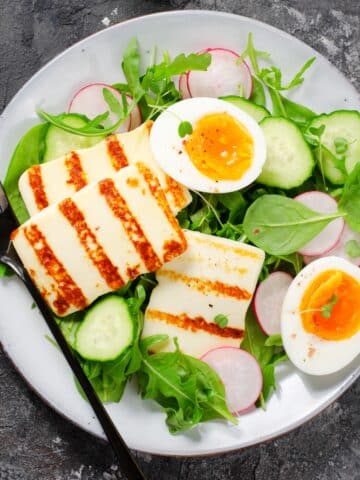



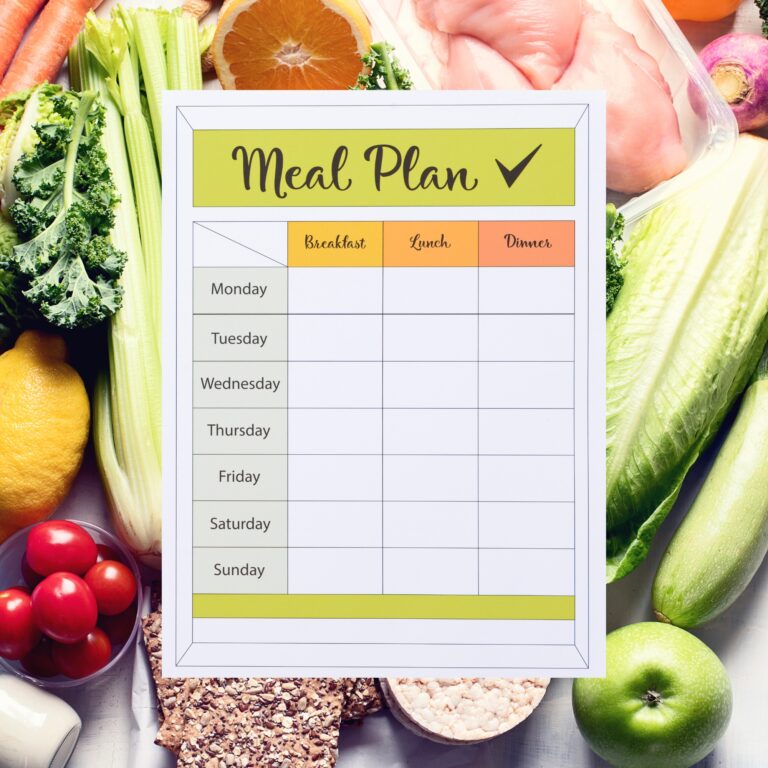





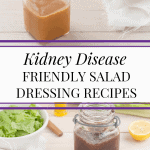
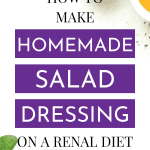
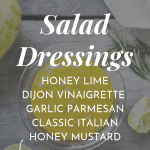
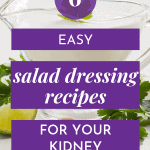

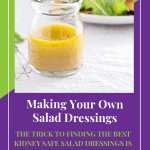
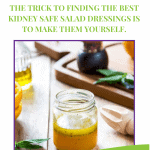
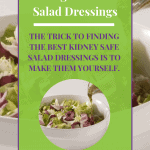



Hi there! Fantastic ideas on healthier options for salad dressings. Thank you! I was curious if you knew the sodium amount for the honey mustard recipe. Also, how long will these keep in the refrigerator?
TIA